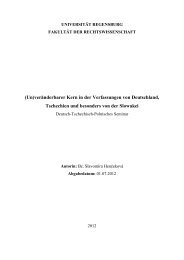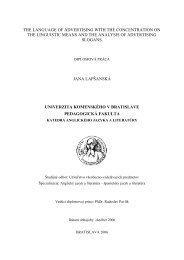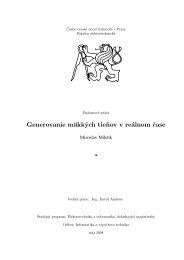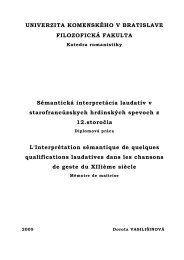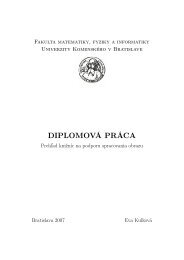Designing Brand Personality Using the Power of Archetypes ...
Designing Brand Personality Using the Power of Archetypes ...
Designing Brand Personality Using the Power of Archetypes ...
You also want an ePaper? Increase the reach of your titles
YUMPU automatically turns print PDFs into web optimized ePapers that Google loves.
2.1.2 Non-traditional Processes<br />
Increasing disappointment with traditional customer research is causing greater<br />
tolerance <strong>of</strong> non-traditional ideas and making it more acceptable to talk about<br />
archetypes in mainstream business. Growing interest in archetypes signals a<br />
major transformation in marketers‟ attitudes about <strong>the</strong> misty regions behind <strong>the</strong><br />
curtains <strong>of</strong> consciousness. Everyone is looking for new answers.<br />
With functionality, reliability, convenience, or price no longer sufficing for<br />
differentiation, brands must compete on meaning. The best way to create “emotional<br />
affinity” through meaning is to use archetypal images to fulfil basic human desires or<br />
motivations and evoke deep emotions. 1 The narratives and meanings behind<br />
archetypes let customers relate to brands by making brands seem alive.(Pearson and<br />
Mark 2001)<br />
Very common methods for assessing brand personality are currently analogies (by<br />
qualitative depth interviews), drawings or free association. 2 A visual tool based<br />
research is one <strong>of</strong> possible ways how to determine <strong>the</strong> right brand personality.<br />
(Schoormans 2009) suggests that by visualizing and image presentation <strong>of</strong> main<br />
personality traits we can avoid deviations in interpretations <strong>of</strong> <strong>the</strong> verbal concepts.<br />
Especially compared with verbal language, visual image represents <strong>the</strong> information<br />
consisting <strong>of</strong> spatial, non-arbitrary and continuous characteristics.<br />
Gradually, a selected group <strong>of</strong> applicants chooses <strong>the</strong> most fitting images to <strong>the</strong><br />
associations <strong>of</strong> <strong>the</strong> company. The aim is to develop not one, but more personalities for<br />
<strong>the</strong> brand: valid view on <strong>the</strong> brand personality <strong>of</strong> <strong>the</strong> own brand, on an ideal brand<br />
personality for <strong>the</strong> brand, on <strong>the</strong> brand personality <strong>of</strong> competitors and on <strong>the</strong> brand<br />
personality as seen by customers.<br />
Next, (Riesenbeck and Perrey 2007) used <strong>the</strong> Gameboard Model proposed by<br />
McKinsey. It is designed to map <strong>the</strong> celebrities and <strong>the</strong> brand portfolios in a certain<br />
category to highlight affinities. (see Figure 2 and fur<strong>the</strong>r description in <strong>the</strong> section 4)<br />
1 For <strong>the</strong> definition <strong>of</strong> archetypes ,see <strong>the</strong> section 3.<br />
2 The methods are discussed in more detail in section 4.<br />
5



